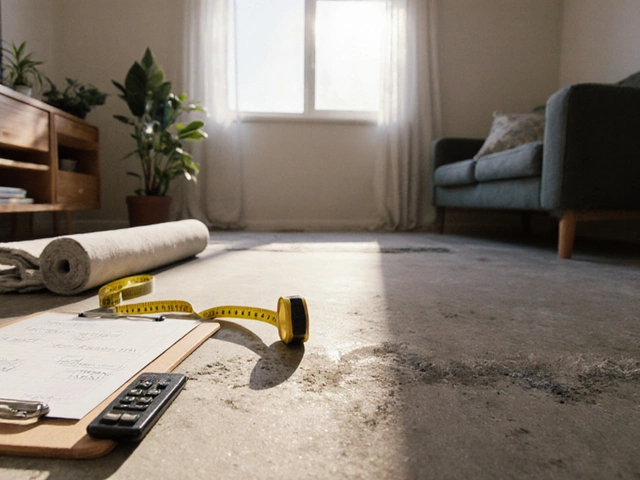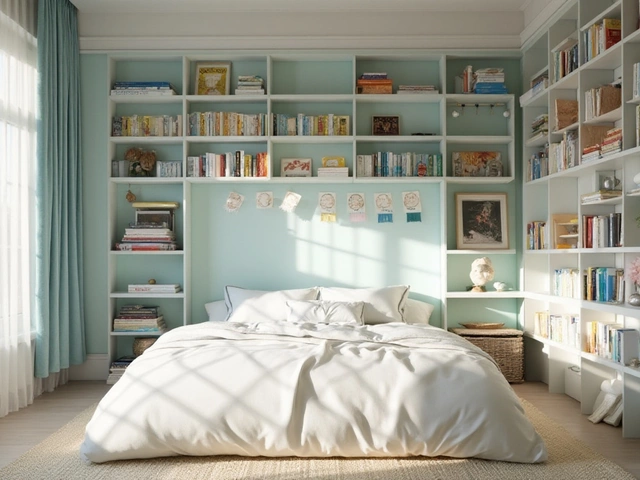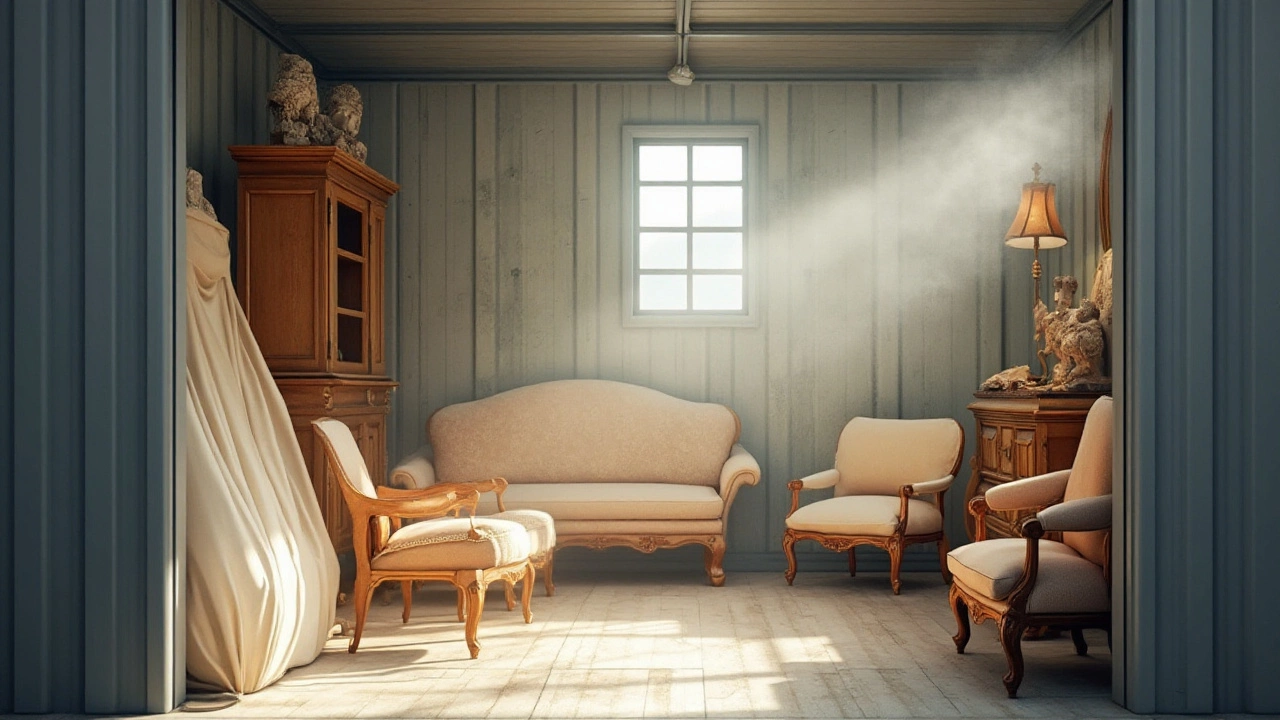
Mold growth on stored furniture is a common concern, especially if you're not quite sure how to keep your pieces safe while they're tucked away. Whether you're moving, downsizing, or just storing a few items temporarily, knowing how to prevent mold can save you a lot of time and trouble in the future.
Mold loves moist environments, and without the right precautions, your furniture might become a target. But don't worry, by understanding a few simple principles about moisture and how mold works, you can protect your furniture effectively. Let's dive into some important facts and helpful tips to ensure your furniture stays mold-free while in storage.
- Understanding Furniture Mold
- Causes of Mold Growth
- Impact of Mold on Furniture
- Tips for Preventing Mold
- Choosing the Right Storage Facility
- Dealing with Moldy Furniture
Understanding Furniture Mold
Mold is a sneaky adversary, particularly when it comes to furniture storage. It thrives in environments where moisture and limited air circulation are prevalent. These conditions can easily be found in storage units that lack climate control. At the heart of it, mold is a type of fungus that reproduces by releasing spores into the air. When these spores find a hospitable environment, they latch onto surfaces, and furniture provides them precisely that. Your precious wooden chairs, leather couches, and even fabric-upholstered pieces are not immune.
It’s essential to know that mold doesn’t just damage furniture visually, it can also affect the material integrity over time. Wood may start rotting, and fabrics can harbor a musty smell that's tough to remove. Mold thrives where humidity exceeds 60%, often going unnoticed until the damage has started. To many, the primary discovery of mold occurs when their belongings start to smell odd, or visible patches of discoloration appear, usually manifesting in green, black, or white fuzzy spots.
The significance of understanding mold is broad. As an enlightening insight, a study by NIOSH reveals that mold exposure can contribute to serious health issues, including respiratory ailments and allergic reactions. This only adds to the necessity of recognizing the problem early, especially if children or people with compromised immunity have access to the affected furniture. Mold isn’t just a furniture enemy; it can disturb the harmony of a household by impacting health and wellness. Having a grasp on how mold operates arms you with the knowledge to take preventive steps, as this silent infiltrator shows no mercy in its pursuit for the damp and the dark.
Prevention truly begins with education about the environment mold loves. The interplay of humidity and airflow cannot be overemphasized. Without adequate circulation, any moisture that makes its way into your storage space doesn’t evaporate effectively, setting the stage for potential mold growth. Invest some time in assessing the area where your furniture is stored. No matter how robust a storage facility claims to be, it’s your responsibility to make sure the conditions are conducive to preservation rather than spoilage. As noted furniture curator and expert James B. Twitchell once said,
“Good storage is like insurance; when everything else goes wrong, it’s what protects your belongings.”Understanding furniture mold isn't about instilling fear but inspiring careful handling and informed decision-making for your valued items.
Causes of Mold Growth
When it comes to storing furniture, understanding what causes mold to grow is essential. Mold is a living organism that thrives on moisture and organic material, which unfortunately includes many types of household items. One of the primary conditions contributing to mold growth is excessive humidity. When the air holds too much moisture, it creates an inviting environment for mold. Since wood and fabric, common materials in furniture, are porous, they readily absorb moisture, making them prime candidates for mold infestation if left unchecked in the wrong conditions.
Alongside humidity, temperature plays a crucial role. Mold spores are more likely to proliferate in warm environments. This is why furniture stored in attics, basements, or storage units without climate control is particularly susceptible to mold. Such environments can trap heat and moisture, particularly in regions experiencing seasonal temperature swings. As temperatures rise, the air's capacity to hold moisture increases, so if there's no way to ventilate, mold finds an easy footing. With inadequate airflow, damp air remains stagnant on surfaces, further exacerbating the risk.
Another often overlooked factor is the cleanliness of the items being stored. Mold spores are omnipresent in the environment, and given the right conditions, they settle and grow on dust and debris. Before stashing away furniture, it is advisable to clean thoroughly to eliminate dirt, which acts as a food source for these spores. Pre-storage cleaning ensures there are fewer nutrients available for mold, minimizing the likelihood of growth. Cleaning agents that contain fungicides can give an extra measure of safety against mold spores before storage.
Choosing the right location for storage is also pivotal. Not all storage spaces maintain the same quality of environmental conditions. It's important to ensure the storage area is dry and well-ventilated. If possible, opt for climate-controlled storage facilities where temperature and humidity are regulated. According to the American Society of Heating, Refrigerating and Air-Conditioning Engineers (ASHRAE), keeping relative humidity below 60% can help in minimizing mold proliferation. This statistic underscores the importance of choosing a suitable location to protect valuable belongings.
Finally, the materials themselves can affect mold's ability to grow. Modern furniture often uses synthetic materials that are less prone to mold compared to natural materials like cotton, wool, or untreated wood. This is because mold requires organic carbon from the item to grow. Using covers or protectors made from mold-resistant material can provide added security against mold. By investing in covers specifically designed to repel moisture, you create a barrier of protection for your stored items, significantly reducing mold risk and preserving furniture integrity.
"An ounce of prevention is worth a pound of cure," Benjamin Franklin wisely noted, and this couldn't be truer when it comes to preventing mold. By addressing each of these factors before storage, you can keep your furniture safe and mold-free for as long as necessary.
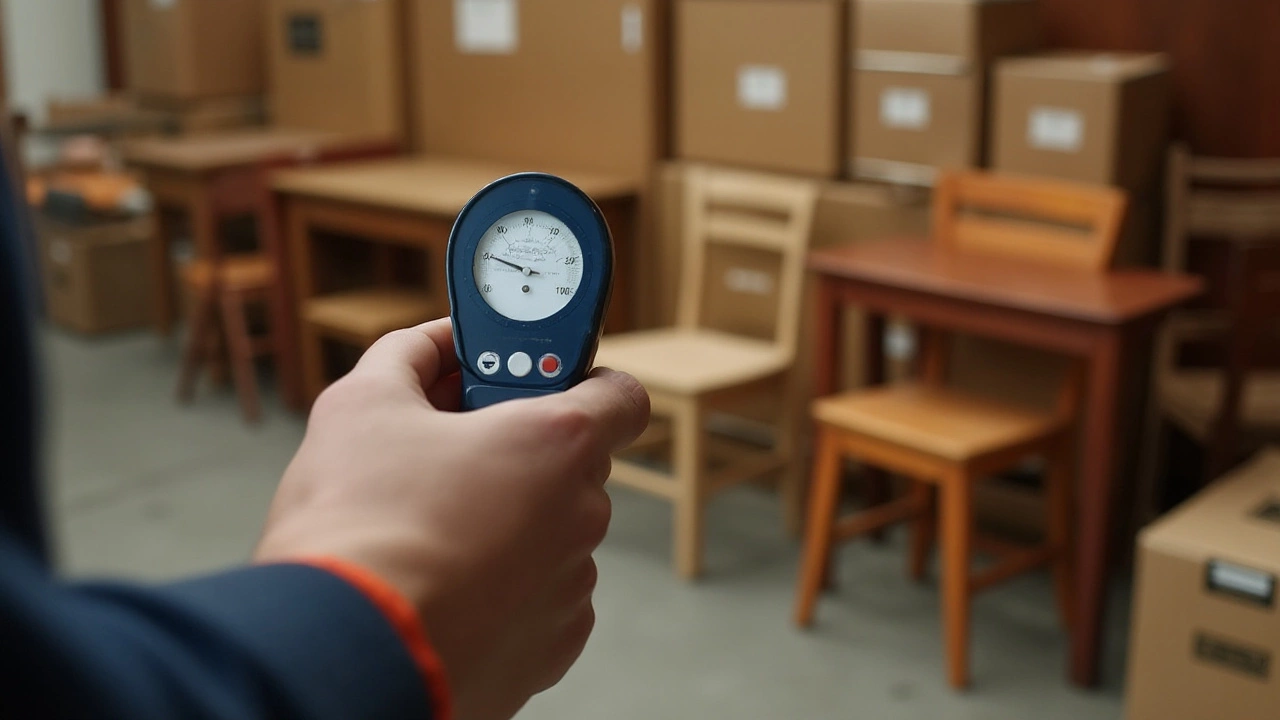
Impact of Mold on Furniture
When furniture mold starts to take hold, it can cause significant damage that goes beyond just an unsightly appearance. Mold feeds off organic materials often found in furniture such as wood, fabrics, and even certain finishes. This growth not only degrades the material but can weaken its structure over time. Imagine the sturdy wooden table you love showing signs of buckling or the smell from your favorite armchair becoming unpleasant. That's mold doing its damaging work quietly. Unchecked, this deterioration affects both the durability and the aesthetic value of your furniture, making once-loved pieces undesirable or unusable.
The presence of mold also poses a serious health risk which many people overlook. Mold can release spores into the air, becoming an invisible threat to those with respiratory issues, allergies, or weakened immune systems. People spending time in spaces with mold-infested furniture can develop symptoms like sneezing, coughing, and even asthma attacks. According to the EPA, indoor exposure to such mold can lead to various health effects. Not only does this make living or working in those spaces less comfortable, it also adds to healthcare concerns.
The moisture that allows mold to thrive on furniture can also invite other problems. For instance, wood furniture might warp or crack under prolonged exposure to humidity, which leads to structural issues. Leather, on the other hand, can develop permanent stains and discoloration that are hard, if not impossible, to clean. Even synthetic materials are not entirely safe; mold can grow beneath the surface, often unnoticed until it's too late. This makes prevention and early detection crucial. A report by the National Association of Home Builders highlighted how post-flood scenarios showed increased reported cases of mold damage, underscoring how environmental conditions can exacerbate these issues.
Dealing with mold growth also incurs financial costs. For one, removing mold is neither simple nor always successful. Professional cleaning or restoration services can be expensive, and there is no guarantee that the furniture will return to its original state. In severe cases, replacement might be the only viable option, which can be costly depending on the item's value. Many insurance policies either limit or exclude mold damage coverage, leaving the burden entirely on the owner. This makes preventive measures not just a priority but a necessity for preserving both the sentimental and monetary worth of your belongings.
Tips for Preventing Mold
When it comes to preventing mold on stored furniture, knowing where to begin can make all the difference. Mold thrives in dark, damp, and stagnant environments, which means that one of the key objectives is to control moisture and improve airflow. If you can achieve this, you'll be halfway to success. Start by choosing a storage facility that offers climate control. This feature allows you to regulate the temperature and humidity levels, creating an environment that mold finds inhospitable. According to a study by the Environmental Protection Agency, maintaining humidity levels below 60% will significantly reduce the risk of mold growth. Investing in a small hygrometer can help you monitor these levels and make adjustments as needed.
Proper preparation and packing of furniture can also provide a defensive barrier against mold. Clean every item thoroughly before storing it. Dirt and organic matter can provide mold with the nutrients it needs to thrive. Use a solution of water and vinegar for a natural clean, as vinegar is known for its antifungal properties. Allow furniture to dry completely since moisture left over from cleaning can be a future mold hotspot. Wrapping furniture in breathable coverings, like cotton sheets or specialized covers, helps keep dust off while allowing air to circulate. Plastic tarps or wraps should be avoided as they can trap moisture, fostering a breeding ground for mold.
Packing and placement strategies are next on the agenda. Arrange furniture to allow air to flow freely around each piece. Too often, items stacked too tightly create pockets where dampness can settle. Use palettes or similar materials to elevate furniture off the ground; cold concrete floors can encourage condensation, especially during seasonal temperature changes. Moisture-absorbing products such as silica gel packs or charcoal can also be placed discreetly around the storage area to help control moisture levels further. Every little step you take will add another layer of defense against mold.
It's important to regularly check on your stored items. Frequent inspections can help you catch any potential mold growth before it becomes a significant problem. Make it a routine check to visit your storage space monthly. You can even take advantage of technology; humidity sensors connected to your smartphone offer real-time readings, keeping you informed wherever you are. As Benjamin Franklin once wisely noted, "An ounce of prevention is worth a pound of cure." This advice holds incredibly true when it comes to protecting your valued furniture from mold in storage.
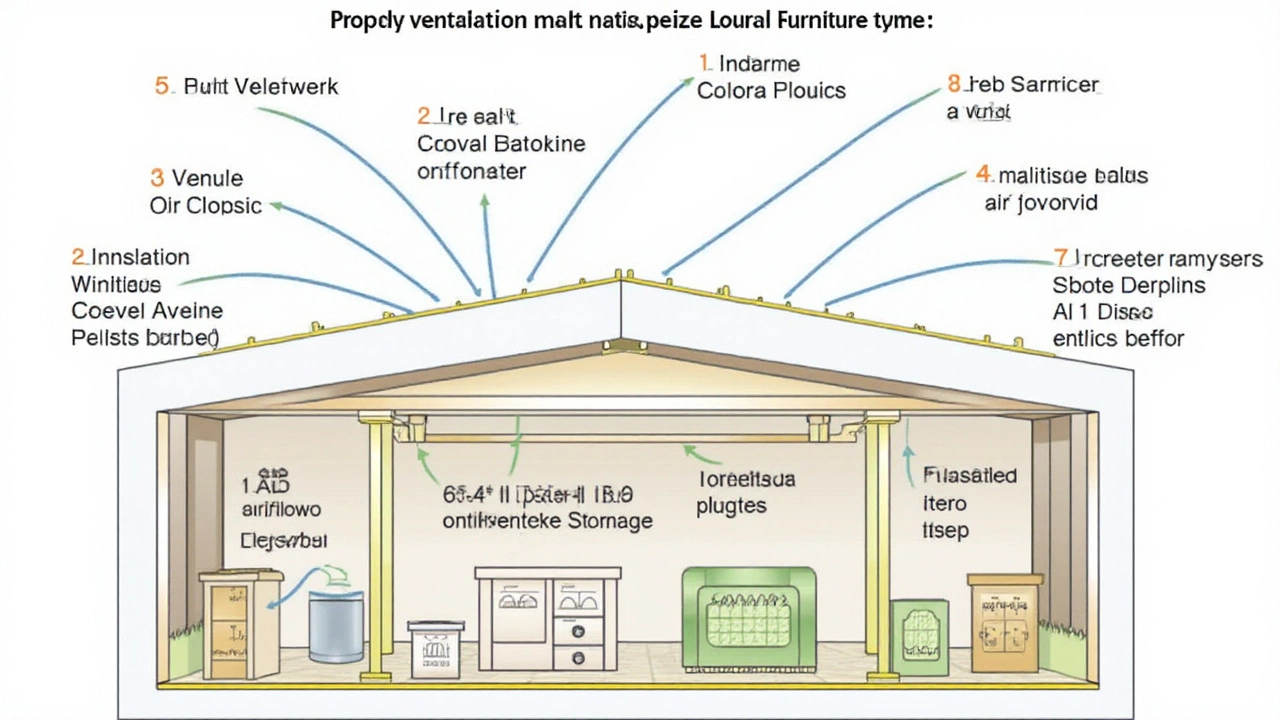
Choosing the Right Storage Facility
When it comes to finding the right place to store your belongings, especially to prevent furniture mold, selecting the appropriate storage facility plays a major role. It's not just about finding a space that can hold everything you have; it's about ensuring that the environment is suited to keeping your furniture safe from the silent threat of mold. Start by considering climate-controlled units. These are more important than you might think because they maintain a steady temperature and humidity level, key factors in preventing mold growth. A unit that is both too humid and too warm can become a breeding ground for mold and mildew, a scenario you certainly want to avoid.
Also, take a look at the facility's reputation and location. Does it have good reviews for cleanliness? Facilities that don't prioritize cleanliness might be more prone to issues like pest infestations or leaking roofs, which can both contribute to the conditions that cause mold. Location matters, too; a facility in a flood-prone area might pose additional risks for water damage, even if the price seems right at first glance. Consider what extra protections a facility offers as well. Insurance options are crucial, as they can provide peace of mind in the unlikely event your furniture is damaged. Some facilities offer 24/7 security and surveillance, adding an extra layer of protection to prevent unauthorized access.
In fact, a report from the Self Storage Association mentions that nearly 65% of storage clients opt for climate-controlled units to protect their belongings, a telling statistic about its importance. When touring facilities, make it a point to ask about their pest control measures, ventilation systems, and how often they conduct maintenance checks. Sometimes, overlooked issues like a clogged gutter or poor air circulation can lead to water accumulation within the storage unit. It's these tiny details that might be signs of larger problems down the line. A proactive approach in these early stages can prevent a lot of problems later.
The American Society of Heating, Refrigerating and Air-Conditioning Engineers states, "Maintaining indoor air quality is pivotal in preventing mold." This couldn't be more relevant when selecting a storage unit, as it reflects the importance of controlled climates in minimizing mold risks.
Additionally, let’s talk about the importance of visiting the facility in person before making your decision. There’s something reassuring about seeing the place for yourself and talking to the employees. During your visit, notice how the facility handles extreme weather situations. Do they have a backup plan for power outages that might affect climate control? Taking these steps to evaluate facilities thoroughly can significantly influence your storage experience and the condition of your stored furniture.
Dealing with Moldy Furniture
Finding mold on your beloved furniture can be disheartening, but it is not the end of the road for your cherished pieces. The key is acting swiftly and understanding a few essential techniques to tackle the issue head-on. Mold thrives in damp environments, often releasing a musty odor and causing potential allergic reactions to sensitive individuals. Start by taking the affected furniture outside, if possible, to prevent spores from spreading indoors. As you prepare to tackle the mold, ensure you wear protective gloves and a mask to avoid direct contact with mold spores.
An effective first step is to vacuum the furniture using a HEPA-filter vacuum which can capture even the smallest mold particles. Make sure to go over every surface, reaching into all the crevices where mold might be hiding. Once the surface mold is removed, you can proceed with cleaning using a mixture of water and mild detergent. Remember, scrubbing too hard can damage the furniture’s finish, so take it slow and steady. For wooden furniture, use a soft brush; for fabric surfaces, a damp cloth is preferable. If you’re dealing with stubborn mold, incorporating distilled white vinegar can enhance the cleaning process due to its natural antifungal properties.
In some cases, stronger methods might be necessary. A mixture of bleach and water (1 cup of bleach to 1 gallon of water) can be effective, but it’s crucial to spot-test an inconspicuous area first as bleach could cause discoloration. After cleaning, allow the furniture to dry completely. Leaving it under sunlight can also help as sunlight contains UV rays that naturally kill mold. It’s important to ensure complete drying because any lingering moisture can attract new spores.
According to the Environmental Protection Agency (EPA), 'moisture control is the key to mold control.' Drying your furniture thoroughly is paramount to preventing reoccurrence.
Some might find comfort in knowing that they’re not alone in facing this mold battle. Millions encounter similar issues annually, and the good news is, most furniture pieces can be saved with the right technique. It might take a bit of patience and diligence, but the results are definitely worth it. To further protect your furniture in the future, consider using dehumidifiers and regularly inspecting storage areas for signs of developing mold. Experts often suggest keeping humidity levels in your home or storage area below 60% to minimize the risk of mold growth.
If after all attempts mold remains persistent or if the furniture is severely damaged, it might be time to consult a professional. Specialists in furniture restoration can provide deeper cleaning solutions and advice. But often, taking action at the first sign of mold, and using proper cleaning techniques, can save your pieces from needing costly professional intervention. Remember, prevention is always better than cure, so keep an eye out and maintain a mold-free environment whenever storing furniture.

